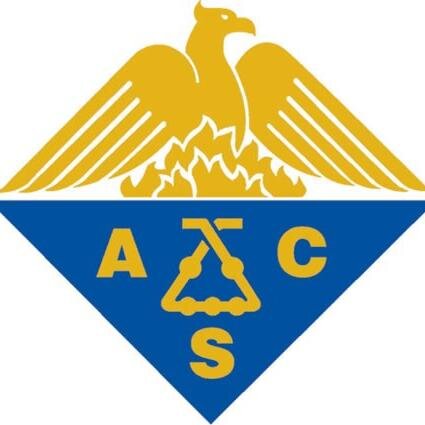
JCTC Papers
@jctc_papers
Followers
4K
Following
1
Media
7
Statuses
4K
New papers in J. Chem. Theory Comput. (not affiliated with ACS)
Worldwide
Joined April 2014
[ASAP] Quantitatively Accounting for Protein Reorganization in Computer-Aided Drug Design
pubs.acs.org
Structure-based drug design frequently operates under the assumption that a single holo structure is relevant. However, a large number of crystallographic examples clearly show that multiple confor...
0
1
5
[ASAP] Interface Adsorption versus Bulk Micellization of Surfactants: Insights from Molecular Simulations
pubs.acs.org
Surfactants play essential roles in many commonplace applications and industrial processes. Although significant progress has been made over the past decades with regard to model-based predictions of...
0
1
8
[ASAP] The OpenMolcas : A Community-Driven Approach to Advancing Computational Chemistry
0
10
27
[ASAP] Constructing Diabatic Potential Energy Matrices with Neural Networks Based on Adiabatic Energies and Physical Considerations: Toward Quantum Dynamic Accuracy
pubs.acs.org
A permutation invariant polynomial-neural network (PIP-NN) approach for constructing the global diabatic potential energy matrices (PEMs) of the coupled states of molecules is proposed. Specifically,...
0
0
9
[ASAP] Linearized Pair-Density Functional Theory
pubs.acs.org
Multiconfiguration pair-density functional theory (MC-PDFT) is a post-SCF multireference method that has been successful at computing ground- and excited-state energies. However, MC-PDFT is a...
0
0
20
[ASAP] Accurate Ionization Potentials, Electron Affinities, and Band Gaps from the ωLH22t Range-Separated Local Hybrid Functional: No Tuning Required
0
2
5
[ASAP] Investigating the Linear Response Function under Approximations Following the Coupled-Perturbed Approach for Atoms and Molecules
pubs.acs.org
The linear response kernel also referred to as linear response function (LRF) in the framework of conceptual density functional theory has gained tremendous success in time-dependent density functi...
0
2
11
[ASAP] Parameterization of the miniPEG-Modified γPNA Backbone: Toward Induced γPNA Duplex Dissociation
1
1
6
[ASAP] Improving Speed and Affordability without Compromising Accuracy: Standard Binding Free-Energy Calculations Using an Enhanced Sampling Algorithm, Multiple-Time Stepping, and Hydrogen Mass Repartitioning
pubs.acs.org
Accurate evaluation of protein–ligand binding free energies in silico is of paramount importance for understanding the mechanisms of biological regulation and providing a theoretical basis for drug...
0
4
15
[ASAP] Alchemical Free Energy and Hamiltonian Replica Exchange Molecular Dynamics to Compute Hydrofluorocarbon Isotherms in Imidazolium-Based Ionic Liquids
pubs.acs.org
Ionic liquids (ILs) have shown promise for applications that leverage differential gas solubility in an IL solvent, e.g., gas separations. Although most available literature provides Henry’s law...
0
4
9
[ASAP] Assessing the Accuracy of Density Functional Approximations for Predicting Hydrolysis Reaction Kinetics
pubs.acs.org
Hydrolysis reactions are ubiquitous in biological, environmental, and industrial chemistry. Density functional theory (DFT) is commonly employed to study the kinetics and reaction mechanisms of...
0
0
7
[ASAP] Machine Learning Predictions of Simulated Self-Diffusion Coefficients for Bulk and Confined Pure Liquids
pubs.acs.org
Diffusion properties of bulk fluids have been predicted using empirical expressions and machine learning (ML) models, suggesting that predictions of diffusion also should be possible for fluids in...
0
5
19
[ASAP] Smooth Things Come in Threes: A Diabatic Surrogate Model for Conical Intersection Optimization
0
1
4
[ASAP] Single-Point Extrapolation to the Complete Basis Set Limit through Deep Learning
pubs.acs.org
Machine learning (ML) offers an attractive method for making predictions about molecular systems while circumventing the need to run expensive electronic structure calculations. Once trained on ab...
0
1
13
[ASAP] Understanding Virus Structure and Dynamics through Molecular Simulations
pubs.acs.org
Viral outbreaks remain a serious threat to human and animal populations and motivate the continued development of antiviral drugs and vaccines, which in turn benefits from a detailed understanding of...
0
9
28
[ASAP] Algebraic Diagrammatic Construction Theory for Simulating Charged Excited States and Photoelectron Spectra
pubs.acs.org
Charged excitations are electronic transitions that involve a change in the total charge of a molecule or material. Understanding the properties and reactivity of charged species requires insights...
0
0
14
[ASAP] New Methodology to Produce Sets of Valence Bond Structures with Enhanced Chemical Insights
0
2
8
[ASAP] Practical Post-Kohn–Sham Methods for Time-Reversal Symmetry Breaking References
pubs.acs.org
The applicability of reduced scaling algorithms based on auxiliary subspace methods for the correlation energy from the random phase approximation (RPA) as well as the correlation part of the...
0
1
11
[ASAP] AlphaFold2-RAVE: From Sequence to Boltzmann Ranking
pubs.acs.org
While AlphaFold2 is rapidly being adopted as a new standard in protein structure predictions, it is limited to single structures. This can be insufficient for the inherently dynamic world of biomol...
0
10
29
[ASAP] Selecting Features for Markov Modeling: A Case Study on HP35
pubs.acs.org
Markov state models represent a popular means to interpret molecular dynamics trajectories in terms of memoryless transitions between metastable conformational states. To provide a mechanistic...
0
5
28


